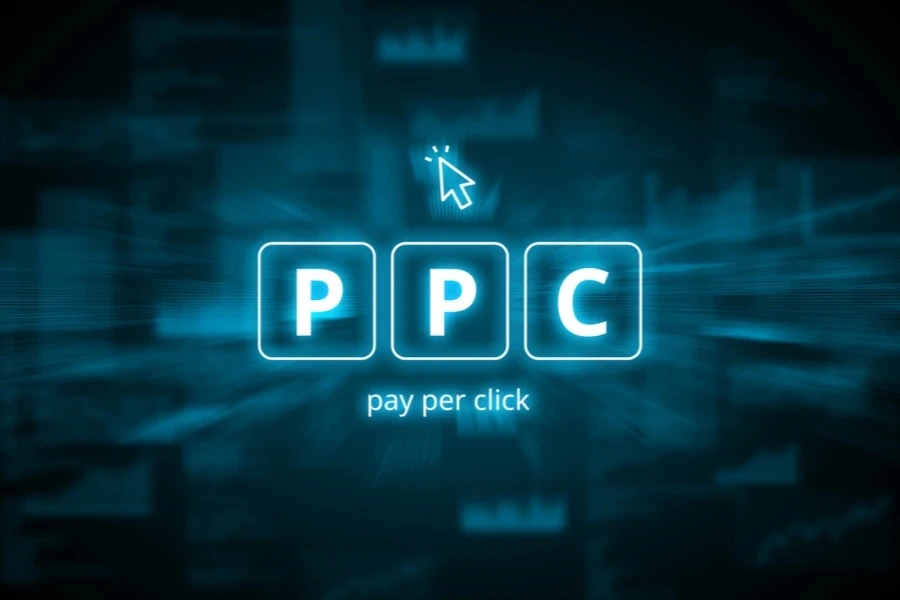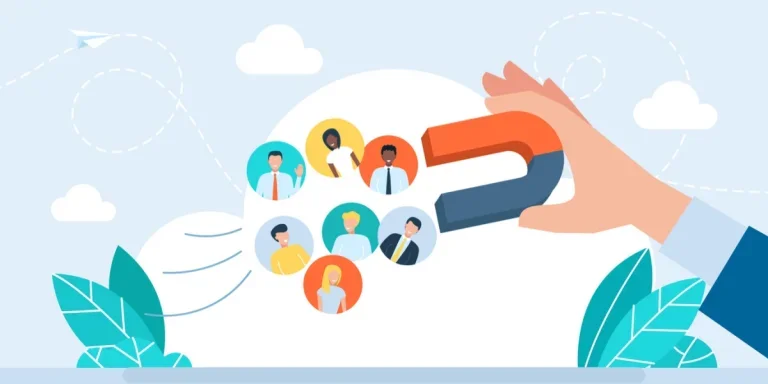Most businesses have to do two things: build a customer base from scratch or add to an already massive one. This is why bringing in new customers will always be a top priority for any company (new or old). However, many entrepreneurs feel this process can be difficult.
Securing new customers often feels like rolling the dice, with results that can seem more luck-based than predictable. However, these business owners might not know that growing a business steadily and profitably means focusing on building a reliable system for attracting new customers instead of just going out and looking for them.
This article will explore how businesses can create a customer acquisition process that tracks the introduction of new customers, the expenses involved in attracting them, and the value each one brings over time. Read on to discover how to manage your customer acquisition process like a pro in 2025.
Table of Contents
What is customer acquisition?
How can businesses do customer acquisition?
A quick look at the customer acquisition funnel
5 Customer acquisition strategies worth trying in 2025
1. Run PPC ads
2. Work with influencers
3. Start a referral program
4. Invest in traditional advertising
5. Improve search engine visibility
Rounding up
What is customer acquisition?
Businesses cannot survive without customer acquisition. This never-ending process starts with finding potential buyers, attracting them, and making them loyal and paying customers. Although it sounds easy, successfully acquiring customers will require a combination of marketing, sales strategies, and strong customer relationships.
How can businesses do customer acquisition?

Customer acquisition channels are the answer. It’s what businesses need to connect with their target audience. And here’s something interesting: customer acquisition channels also have roles in every customer journey stage—they’ll help turn strategies into effective interactions. Some popular channels include email marketing, organic social media, business websites/blogs, and paid ads.
A quick look at the customer acquisition funnel

Before jumping into the different customer acquisition strategies businesses can use, they should understand the process. Essentially, it unfolds in stages, which creates the concept of a funnel. With this funnel, business owners can know the best path potential customers should follow to increase their chances of becoming paying consumers. Here are the funnel’s stages:
- Awareness (top of the funnel): This stage is where businesses create awareness and generate leads. Remember to keep it centered on the target audience and anyone potentially interested in a brand or its products.
- Consideration (middle): If the target audience likes what the business does in the awareness stage, they’ll move to this level. They’ll show interest (by following the brand or joining an email list) and consider buying from it. Then, it’s up to the business to persuade them to take that plunge.
- Purchase (bottom): This stage is where the persuasion happens. By now, the prospect would have shown enough interest, like adding items to their cart or signing up for a free trial. Here, businesses should nudge them toward purchasing with different tactics, like offering incentives (discount codes almost always work).
5 Customer acquisition strategies worth trying in 2025
Here’s one marketing tip: Spending big on marketing campaigns doesn’t mean they will be successful and generate the right results. So, if businesses want successful customer acquisition, they must choose the right strategy (and channel). Here are eight awesome ones that can help in 2025.
1. Run PPC ads

Billions of people are online daily, so it makes sense that advertising in that space is one of the best ways to attract new customers. Many brands prefer social platforms like Facebook and search engines like Google because they offer amazing ways to track performance and make changes. That way, businesses can get the most value from their advertising budgets.
Although Facebook and Google offer unbeatable access to paid traffic, don’t look down on other platforms. Remember that the best platform for PPC ads depends on where the target audience is, not the most popular option.
Advantages of PPC ads
- Quick growth: Want to grow an audience fast? Paid traffic may be the best way to do it. PPC ads guarantee exposure, especially if brands use them with a well-planned strategy and smart optimization.
- Precise targeting: PPC ads are also popular for their supreme targeting options. Businesses can use interest and behavior targeting to send ads where they will have the most impact.
Downsides
- It can get expensive, especially since Facebook and TikTok raised their ad costs and CPM by 89% and 92%, respectively.
- PPC ads need to be masterfully managed to achieve the best results. It’s not just a matter of clicking and relaxing—businesses must gain enough experience to feel confident about using this strategy.
Best for
- Businesses with enough budget.
- Brands with creative assets.
2. Work with influencers
Influencer marketing is an even faster way to reach an audience if businesses have the budget for it. This strategy puts the brand and its products in front of a massive or dedicated audience (depending on the influencer). Some even argue that influencer marketing is just as effective as personal recommendations from friends.
Advantages
- Brand awareness: Influencers with hundreds of thousands (or even millions) of followers can give brands an instant dose of brand awareness, pouring people into the customer acquisition funnel.
- Niche targeting: While large influencers look irresistible, businesses with niche products will get better results from micro-influencers. They have stronger engagement and won’t be as expensive, meaning better ROI and visibility.
Pro tip: Remember that influencer marketing won’t give businesses instant paying consumers. Instead, it’ll make the brand the first thing the audience thinks of when they’re ready to buy.
Downsides
- Influencer marketing doesn’t offer any good way to track success, especially ROI.
- If businesses don’t pay upfront, they won’t get the influencer’s services.
Best for
- Businesses with products that need demonstration.
- Trendy products or brands.
3. Start a referral program

Although some say influencer marketing is as effective as friendly recommendations, it still carries much weight. After all, people will trust what their friends and family say, especially when suggesting a product or brand.
However, businesses hoping to use the referral strategy must make it easy and rewarding enough for loyal customers to bring their friends on board. That’s where referral programs come in.
Advantages
- Lower costs: Referral programs are less expensive than influencers and are just as effective. It’s a low-cost way to attract new buyers, as rewards can include anything from free subscriptions to discounts after successful purchases.
- Repeat purchases: Loyal customers rewarded for bringing a friend have higher chances of making repeat purchases.
Downsides
- Low engagement: While referral programs are awesome, not everyone will be willing to participate, especially if customers don’t like the brand’s service or products.
Best for
- Brands with an existing and loyal customer base.
4. Invest in traditional advertising
Online advertising almost took over the marketing scene, and everyone jumped on its train—until ad blockers became a thing. Now that most consumers know how to avoid ads with these tools, many companies are returning to traditional advertising, like flyers and billboards. Harvard Business Review even says spending will increase by 11.7%.
Advantages
- Consumer trust: While trust in digital ads has soared recently (especially for well-known brands), print and TV remain the most trusted advertising channels.
Downsides
- Businesses won’t have many options to track traditional ad performance. The reach is too broad, so they can’t enjoy the same precision tracking they would with digital ads.
- Running a traditional advertising campaign also requires an upfront investment, and the budget is not flexible.
Best for
- Local businesses.
- Brands selling high-priced products.
5. Improve search engine visibility

Google is such a massive platform that many consumers start their search for a product or service there. So, why not do some SEO to attract some new eyes? This strategy involves creating blogs and content that pushes the brand to the first pages of search results.
More importantly, businesses can research keywords to rank higher on Google pages. It’s a great way to drive traffic to the blog or website and attract anyone with enough potential to become a customer.
Advantages
- SEO offers a great opportunity to gain passive, organic traffic. Google receives many queries daily, so businesses that optimize their content will receive a large share of this pie.
- Even content posted years ago can generate leads and traffic for businesses—and they won’t have to pay for every new visitor.
Disadvantages
- It looks promising, but organic growth is slow. However, businesses can also pay to appear as sponsored links.
- Google has a lot of competition, meaning brands will fight for that visibility.
Best for
- Brands that don’t mind playing the long game.
- Content creators.
Rounding up
While keeping existing customers happy and encouraging repeat purchases is good; businesses must also attract new customers to stay healthy. Effective customer acquisition strategies can help them do that.
Finding the best channels to attract new customers is not a one-time shot. Businesses must try different channels and strategies to see what works best. This will help them avoid relying on only one method.




